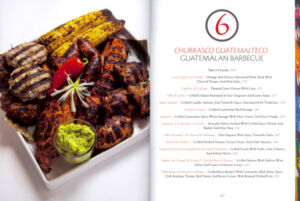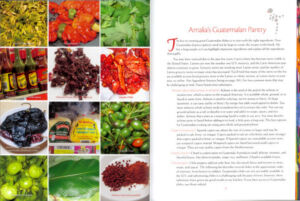FEATURE Published by Independent Publisher Aug 2013 Amalia’s Ste ps to Successful Book Production – by Lauren White. We have all seen them – books with illegible titles and jacket typos, displaying incoherent design or that overused, generic stock photo of the smiling woman. And sadly, despite wholeheartedly agreeing with the ancient advice “don’t judge a book by its cover,” our eyes often slide over to that beautifully designed book on the same subject one shelf over. Unaware that a moment of judgment even occurred, we peacefully purchase the second book without another thought toward the first or the amazing content that it could be housing.
ps to Successful Book Production – by Lauren White. We have all seen them – books with illegible titles and jacket typos, displaying incoherent design or that overused, generic stock photo of the smiling woman. And sadly, despite wholeheartedly agreeing with the ancient advice “don’t judge a book by its cover,” our eyes often slide over to that beautifully designed book on the same subject one shelf over. Unaware that a moment of judgment even occurred, we peacefully purchase the second book without another thought toward the first or the amazing content that it could be housing.
In many cases, potential readers have only the book’s look and feel to consider – particularly when they have never come across the author or publisher before. And as the output of self-published books continues to increase according to a study by Bowker, readers will recognize fewer and fewer names while ha ving more indie or self-published books to choose from. It is therefore all the more important for independently published or self-published books to strike the eye as professional so as to remain competitive with the scores of attractive titles hitting the market every month.
ving more indie or self-published books to choose from. It is therefore all the more important for independently published or self-published books to strike the eye as professional so as to remain competitive with the scores of attractive titles hitting the market every month.
Unfortunately, the laborious and costly production process can claim the appeal of even the most inspired book concepts. Often the vision of a book fails to translate into actual physical details because the author has only a fuzzy idea of the layout and design that gets further away with each little decision involved. Other times, the most meticulously imagined idea falls apart when conflicts arise around budget and resources. Whatever the circumstances, a messy appearance can harm a book’s success; blogger Jeff Goins admits he makes snap decisions on whether he will promote a book based on its cover because he simply doesn’t have time to look further.
For text-heavy books, a botched production job may not be a fatal blow. But for all the rest, the production process has to be carefully monitored or else the appeal of the book could be compromised and the sales could suffer. So how to avoid joining the thousands of books published each month with sub-par design and layout? We got the chance to speak with Amalia Moreno-Damgaard, IPPY-award winning author of Amalia’s Guatemalan Kitchen, about her experience with the production process. Her cookbook manages to maintain the professional, eye-catching design of the cover seamlessly throughout the interior layout, conveying a sense of quality production and content to the viewer.
Here are Amalia’s six steps to book production success:
1. Have a detailed vision for your book.“Having a picture in your head of what you want the book to look like can save you time and effort when meeting with the designer,” Amalia says. “Early on in the manuscript process, I started using the layout and colors to match my logo and website and the logo and its derivatives, and the font and looks of the pages.” You can see the outcome of her attention to these details in the cohesive and balanced design of Amalia’s Guatemalan Kitchen.
Unsure of how exactly you want your book to turn out? “If you don’t have a complete vision for your book, have an idea of what you are looking for that you can communicate to others,” Amalia advises. “Find books in the market that you aspire your book to look like and show them to your publisher as an example to build on.”
2. Find the right partner and professional supporting network.“Shop for a one-stop publisher that can outsource pieces of the book to highly qualified professionals,” Amalia says. “Meet and interview these professionals prior to working with them, and make sure that they are a good fit in terms of your book’s genre.” With her publisher Beaver’s Pond Press, she hired experienced photographer Todd Buchanan as well as James Monroe Design for the cover and interior layout.
3. Maintain control of the entire process. Amalia explains why this step is essential to executing your plan. “I had an input in every phase from beginning to end to make sure my plan and vision were fulfilled,” she says. “Stay on top of everything at all times because once the manuscript leaves your hands, it gets handled by so many people that all the moving parts must be in unison at the end.”
4. Demand high quality all the way through. It’s easy to overlook little mistakes when undertaking the immense project of creating a book. Amalia advises remaining vigilant throughout the process. “Look for typos, omissions, errors, and other details up to the time the book goes to print,” she warns.
5. Want and have the means to make the investment. A high quality book can require a hefty investment, so be sure to budget your book production plan carefully to get the most bang for your buck.
6. Follow up on the finished project and opportunities… they are endless! After you have produced a beautiful book, keep up on any and all marketing opportunities that come your way. “I have identified other markets that I didn’t consider during my initial research phase,” Amalia says. “I am still new to this process, I continue to meet and interview people who are successful. Research is the key word. Always keep your eyes and ears open for new opportunities, as new ones will become visible once you become immersed in the field.”
* * * * *
 Lauren White recently graduated from the University of Michigan with a degree in History and English. She is serving as assistant editor at Independent Publisher for summer 2013 and hopes to continue her career in publishing in New York City. Please email her at lwhite [at] bookpublishing.com with any questions and comments.
Lauren White recently graduated from the University of Michigan with a degree in History and English. She is serving as assistant editor at Independent Publisher for summer 2013 and hopes to continue her career in publishing in New York City. Please email her at lwhite [at] bookpublishing.com with any questions and comments.
